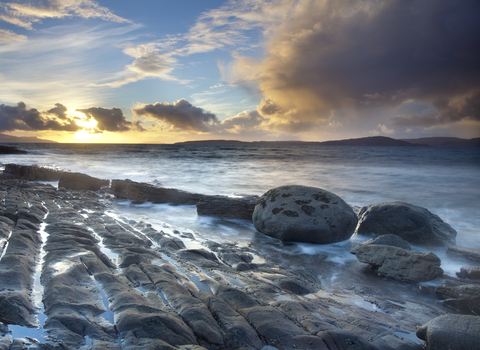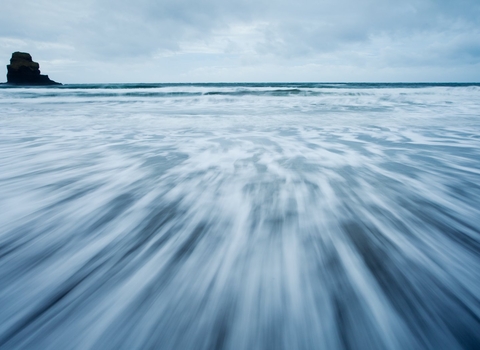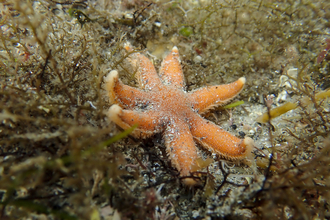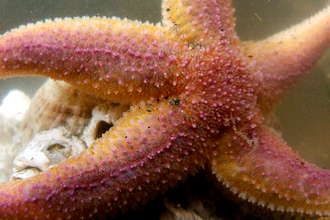
Bloody Henry starfish ©Polly Whyte/Earth in Focus
Bloody henry starfish
The bloody henry starfish is normally a bright purply-red colour and is found all around the UK.
Scientific name
Henricia oculata or Henricia sanguinolentaWhen to see
January to DecemberSpecies information
About
The name bloody henry starfish actually refers to two very similar starfish, Henricia oculata and Henricia sanguinolenta. This is because it is incredibly difficult to distinguish between the two, especially when seen underwater! The bloody henry starfish is sometimes found in rockpools at very low tides and lives on the seabed down to depths of over 100m. Despite its deceptive name, the Bloody henry starfish is less predatory than other starfish, feeding mainly on floating plankton and suspended matter. Though it will prey on sponges and other invertebrates if necessary! They are usually a bright purply-red colour (where they get their name from), but can also be brown, lavender or dark red. They sometimes have a blotchy pattern, like they've been covered in paint.How to identify
The bloody henry starfish is a stiff rigid starfish with a sandpapery texture to the dorsal surface.Its colour varies in reds, browns, purples and yellows. Large in size, on average reaching 10cm in diameter. However, the species can grow up to double that.





